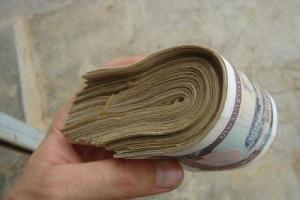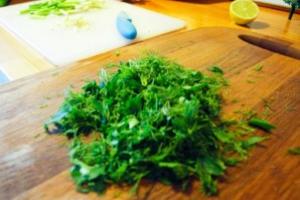Organizing a dacha recreation area with your own hands is an interesting activity. An integral element of a gazebo, a quiet area of the yard surrounded by living greenery, or a cozy space on the porch of a house is a bench with a backrest. Such garden furniture will allow you to relax and spend time with a pleasant conversation, a cup of tea or with your favorite book.
Features of manufacturing benches
Building benches takes time, a practical and creative approach. Before you begin, you should prepare a drawing that will help you quickly achieve the desired result.
Depending on the type of bench material, tools for manufacturing are required. The main requirement for safety and ease of work is the serviceability of devices and the ability to handle them.

Assembling a garden bench according to a drawing is not determined by strict execution principles. But, like from anyone landscape element First of all, strength, comfort and stability are required.
If the load of the bench on the supports is not evenly distributed, it will be impossible to use.
To make a bench they use different materials. The choice is primarily related to the availability of raw materials and ease of processing. If wood is freely available at every dacha, then concrete and metal will have to be purchased. Some processes require experience in processing the material itself, which makes DIY difficult.
Bench design with backrest
Such garden bench consists of several parts that perform different functions:
- Legs are support elements that allow you to stably place the product on the platform. To maintain the balance of the bench, even when no one is sitting on it, the legs on the back side are made wider. The height is taken into account in accordance with a comfortable fit - 40-50 cm.
- The seat is the horizontal surface of the bench that is attached to the legs.
- The backrest serves for a comfortable sitting position. This element is fixed to the upper parts of the rear legs or to the edge of the seat.
- Armrests are optional parts, but useful. They serve for a comfortable positioning of the hands of the person sitting and give the bench a more complete look. The connection can be made in different ways: with the seat and back, with one of these parts, or by moving the armrests away from the legs.

Wooden - the simplest

For work use a regular carpentry tool– manual or electric. The assembly elements most often are boards, slats and beams. Standard configurations and sizes of building elements help create the correct geometric shapes and securely fasten parts together. For such bench options, a drawing of the future design is first made:

Metal benches
A pure metal garden bench is a rarity. Iron as a material for a bench has a number of disadvantages: cold surface, rigidity, difficulty in processing, and others. The only factor due to which metal is sometimes preferred to wood is that it is more long term services. The disadvantages of the material can be easily circumvented by using soft pads on the seat and back.

Metal product
The elements of an ordinary iron bench and the methods of making the structure are the same as those of wooden bench. Instead of boards and beams, rolled metal and pipes are used. The legs and intermediate transverse supports for the seat and back are made from corners, I-beams or profiles. Pipes with a round cross-section are also suitable. To form planes, it is better to use a profiled pipe: it is durable and creates an even, smooth surface.
Stone and combined benches
Garden bench made of granite, concrete, marble - heavy and complex stationary design, which is difficult to make yourself using one material. Processing the bench may take several months.

Bench made of stone and wood
Stationary options have high aesthetic value, where stands (columns) made of stone are the legs of the bench. This kind of work is easy to do; the upper elements of the bench are more difficult to manufacture. In the countryside, instead of stone, you can use concrete, from which it is easy to create an interesting shape of legs with cutouts for the seat.
It is not necessary to increase the support area of a stone bench with a back - the concrete is firmly connected to the ground.
A combined option that also deserves attention is a garden bench made of metal and wood. This design has a number of advantages: the iron frame increases service life, and wooden elements the backs and seats are easy to replace in case of breakdown. Forged parts and shaped armrests add a special touch to the benches.
Wooden, metal and concrete benches with a back require surface treatment immediately after manufacture. Antifungal and anticorrosion agents, primers, enamels, paints, varnishes protect materials from damage by insects, mold and exposure environment. Carrying out such activities allows you to extend the life of the garden bench.
Benches for a summer house made of boards
One of the most necessary items in the country is an ordinary bench. It's nice to sit on the bench in the shade on a hot summer day or in the evening at the end of a hard day. Stores offer wide choose park and country benches, however, a number of difficulties arise here. Firstly, the cost of such a product is quite high and the quality may not be satisfactory. And secondly, there is a problem with delivering the product to the summer cottage.
All these problems can be solved if you do DIY garden bench. The main advantages in this case are the availability of materials for manufacturing, as well as the ability to design a bench of a convenient configuration. Based on these tasks, we propose a design for a bench for your dacha, which you can make yourself. For this, 2 x six meters will be enough. By cutting them into pieces 1.5 meters long, they can be transported to their destination quite easily.
Get forty-millimeter boards to ensure sufficient reliability and strength of the bench. Considering the location of the benches on the street, gaps are made in the back and seat to remove rainwater. Therefore, the total seat width of the benches is forty centimeters, which ensures comfortable sitting on it. The 18° backrest angle is chosen for better ergonomics. The tools you will need are a hacksaw, a drill with wood drills, an electric jigsaw, a screwdriver (screwdriver) and available materials (square, pencil, tape measure).

Dimensions for a wooden bench

Making a bench for a summer house
First, let's prepare boards and beams of the required size. You need to have 5 one and a half meter boards, 2 360 mm boards. and two - 52 cm each, which are then sawn into 4 beams, which we will use to fix the legs and seat. The legs and backrest holder will be two 720 mm boards on which the cuts are made. The cut boards are planed to remove burrs. After removing the fissures, you need to make the edges of the boards and beams smooth. Before installation country bench To extend its service life, the wood is treated with an antiseptic. To give the desired shade, you can use a colored antiseptic.

Scheme - drawing: Bench with back

We will begin the installation of a bench made of boards with the legs, which we will connect to each other with crossbars and self-tapping screws. When using boards and timber to construct a bench for the dacha, you must be very careful about the correct formation of the legs. The stability of the structure itself depends on them. By deepening the legs into the ground you can significantly improve the stability of the bench. You can use hemp or log stumps as legs. It is advisable to connect the joints of the bench with wooden dowels (as shown in the video).

Self-tapping screws are used to attach the seat and back boards to the bench legs. If they are not long enough, you need to make a hole in advance that is larger than the diameter of the screw head. The clamps are made with reverse side to make the fastener invisible. Having determined the most convenient angle of the backrest, we secure the stops with self-tapping screws using corners and plates.

Installation of bench backs
On final stage The legs of the garden bench are fastened together by installing a lower cross member. Treating them with mastic will help prevent your feet from absorbing rain moisture. For this, a bucket of protective composition Heats up over a fire until the mastic becomes liquid. Turning the garden bench over, carefully brush the legs over the entire surface with a brush. For complete drying, you need to wait one day and only then further processing is carried out.

The assembled product is coated with yacht varnish or special impregnation to protect it from moisture. Naturally, the varnish coating looks much better, but at the same time the varnish surface becomes colder. Covering the surface of a garden bench with one layer makes it rough. You can achieve a smooth, shiny surface of the bench using special technology.
At the same time, after waiting for the first layer of varnish to dry, the board is treated with sandpaper and coated with varnish twice more; after drying, you can use the bench.
Note! If you want to save time and purchase ready product, we advise you to contact the Kupistol company. It is famous for the quality of the furniture it sells, excellent service (fast delivery, same-day assembly, return options) and low prices. There is a huge assortment of furniture for home and garden, so every buyer will be able to choose furniture based on different criteria such as design, material, cost, etc.
If, sitting on a bench, you want to relax and be inspired, then it is more logical to place it near something beautiful: a pond, a flower garden or an alpine slide.
Making a garden bench with your own hands is not an easy task, but you don’t need to be a professional in wood carving or welding. It is enough to have some skills in working with a hammer, saw or welding machine, materials and desire.
Soon you will have comfortable and beautiful benches for the garden, made by yourself.
Having the desire and necessary materials, building benches for the garden is not difficult
Required materials and tools
With a creative approach, a garden bench can be made from almost anything. The most optimal and simplest option is wooden bench, for which the materials you will need are boards and varnish with a primer, and the tools you will need are a screwdriver and a jigsaw.
If you want to see a metal bench on your site, there will be a completely different set of tools: a welding machine, metal pipes, a pipe bending device, a grinding machine.
If there is none of the above, and the desire to see a bench on the site is great, you can use any available materials. Bricks or car tires with a board in the middle, wooden boxes can also serve as a bench. Even from plastic bottles and cardboard you can build a cute bench.
Step-by-step instructions for making a bench with your own hands
Wooden garden benches with backs
Most often there are two types of wooden benches made by hand: an ordinary bench and a bench with a back.
For convenience, before starting work, it is better to draw a drawing, choose the size you are interested in and buy boards that fit the size. If this is not possible, you need to use electric jigsaw or a saw, and prepare the elements of the bench yourself.
Read about the types of perennial fast-growing shrubs for hedges.You will need:
- 5 boards 1.5 m long and 15 cm wide, it is better to choose a thickness of 3-4 cm;
- 2 legs, which will also serve as a support for the back - 900 by 150 mm and thickness 3-4 cm;
- 2 front legs – 360 by 150 mm with a thickness similar to the rear legs;
- bars 40X40 mm;
- screwdriver and screws;
- varnish and impregnation;
- electric jigsaw;
- sandpaper.

The drawing will help you in making a garden bench
Having prepared all the necessary materials, you can get down to business.
Before fastening the boards together, they must be well processed so that relaxing on the bench will bring pleasure and not splinters. The longest boards that will go on the seat and back need to be sanded using sandpaper (or a sanding machine).
If the house has electric plane, you need to use it to make the shape of the boards round.
The blanks for the rear legs need to be modified to give them the correct shape.

The legs, which also double as a support for the backrest, are processed with a grinding machine.
We take boards 90 cm long and mark a division of 40 cm - the height of the bench. From this division, at an angle of 20 degrees, we cut off the upper part of the board with a jigsaw, while the board should stand on its edge. We get the back leg and the angle of inclination of our future back.
The most difficult and important is the cut; it must be even on both workpieces in size and depth.
We cut the beam to the width of the bench - 50 cm. We connect the legs with it, preferably both from above and from below, so the bench will be more stable. The distance between the legs is 28 cm (front and back).
We screw three long boards with self-tapping screws and a screwdriver to the upper beams of the finished legs, with which we tied them together.
Assembling the back of the bench. We attach the two remaining boards to the previously prepared cut. The distance between the seat and the board is 20 cm, the boards are 2-3 cm.
The structure can be strengthened. To do this, to lower harnesses legs, you need to attach a board along the length of the bench. This will give even more reliability and stability.

We coat the bench with varnish to make it decorative and durable.
Wooden garden benches without backrest
Similar to the steps described, you can make a simpler bench without a backrest. For it we will need everything the same, except for 90cm boards going to the back legs, instead two more boards 36cm in length. It is assembled according to the same principle as a bench with a back.
Garden benches made of metal and wood
Making a bench from metal and wood is much more difficult than just making it from wood, but it is stronger and looks more solid.
You will need:
- metal grinder;
- welding machine;
- bench vice;
- metal pipes 30X30 mm;
- primer for metal;
- wooden boards for sitting and varnish, for processing.
Seat frame. We cut the pipe into 4 parts: 2 x 1500 mm, 2 x 400 mm. Weld in the shape of a rectangle.
Legs. Cut from metal pipes 4 identical pieces for legs 460 mm each and weld them using welding machine to the corners of the rectangular workpiece.
Bench back. 440 mm tubes are welded to a pipe 1500 mm long on the sides in one direction. This blank is then welded to the rectangular part of the bench.
The structure is ready, it is necessary to rub the welds, polish and coat the bench with a primer.
To add rigidity between the legs, additional metal ribs can be welded to the back (diagonally inside) and to the seat.

The bench made of wood and metal is ready
Seat. For the seat, it is preferable to use wooden boards, which must be treated with sandpaper before screwing.
They are attached lengthwise or crosswise, depending on your desire, using bolts (preferably with rounded heads).
In a metal frame using electric drill holes are drilled into which the bolts are screwed. You can also use metal staples, then you won't need a drill.
Finishing installation work, wood covering varnish.
Garden benches made of stone
Garden benches made of wood look beautiful, but they require careful maintenance. But stone benches are easy to maintain and easy to assemble.
If there are unattended stones on the site different sizes, from them you can build an almost exclusive shop.
We take large stones and lay out the seat and backrest from them. We lay out armrests from small stones. We put a few decorative pillows and you can sit down to rest.
Such benches are inconvenient to move around the site, but they look original.

Making a bench for the garden yourself
Description
Instructions for making a garden bench step by step, each step is described in detail and illustrated
Victor Sergeev
Perhaps only a classic garden can do without benches; there should be nothing in the garden except potatoes or cucumbers. But even a small garden can hardly be imagined without benches. The garden is still intended for relaxation and admiring nature, but doing this while standing is not very convenient. Currently, the choice of such structures is quite large; wooden and metal garden benches are especially popular.
Types of garden benches
Regardless of the design and size, the purpose of any bench remains the same - it should give a person the opportunity to sit down, relax and slowly enjoy the view of a cozy garden. Benches can be classified according to several criteria, for example, by the material from which they are made and by design.
Materials for making garden benches
There are several popular materials:
- plastic – the advantages of benches made from this material include resistance to climatic influences, light weight and a relatively low price. There are options for folding structures on sale; they are convenient to take with you on periodic trips to the country;

- wood - do-it-yourself garden benches are usually made from this material. The tree looks great on garden plot, and in general it is considered a classic, and classics are always in price;
Note!
Wood, even if applied protective coatings, is much less resistant, for example, to moisture and insects than plastic, stone or metal.
So the wooden ones will fail first.

- metal - as for metal products, then 2 options are possible: homemade benches from a profile pipeline or forged ones. It is impossible to make forged benches from scratch without having blacksmithing skills; the most that can be done is to buy ready-made forged sidewalls and then assemble the bench yourself;

- stone garden benches– record holders for durability. You can fit 1-2 large boulders under a bench, or use purchased marble and sidewalls, the whole question is in the price and the general style of design of the site;

- concrete - the sidewalls can be cast from concrete, and a concrete slab will act as a seat;
- combined options– the most common type is a combination metal frame and wooden slats (back and seat). There are options for combining stone and wood.
Note!
The use of wood makes the bench more comfortable.
IN cold weather There is little pleasure in sitting on icy metal or stone; wood is preferable from this point of view, because its thermal conductivity is much lower.
Garden bench design options
At first glance, there is nothing complicated in the design of the bench - 4 legs, a seat and a back.
But there are also more complex designs:
- bench without back - simplest option, a dubious option in terms of comfort, because you won’t be able to sit back and relax;
- garden bench with backrest – adding a backrest takes relaxation comfort to a new level;

- bench with table - with this option, a pair is installed on one base. This design is optimal for communication in nature;
- a bench with a canopy - can be considered as an analogue of a mini-gazebo. However, protection from slanting rain is weak, so such a structure should not be considered as a full replacement for the gazebo;

- benches created in an artistic style, the main focus in this case is on appearance. Instead of standard sidewalls, for example, figurines of fairy-tale creatures, etc. can be used.
If the bench in your garden is not planned in the form of a large stone or a fallen tree trunk, then you will have to spend a little time thinking about the design and calculating the required number building materials. A correctly drawn up drawing is the main basis of a good shop.
Drawings of garden benches made of wood, or any other material, must contain not only a general image of the structure, but also detailed dimensions of the main elements.

Wooden bench
There are several manufacturing options:
- use large tree trunks as the main elements. Half of such a trunk may well lie on the ground and, due to its large thickness, act as a seat at the same time;

- just dig a couple of posts (or concrete) and use them as the basis of the structure;
- beam construction is the most common option. It makes sense to take a closer look at an example of such a design.
As for the sizes, everyone selects them based on their requirements for the shop, but you can focus on the following values:
- The height of the back most often does not exceed 50 cm;
- the height of the bench, that is, the distance from the surface of the ground to the surface of the seat, is also taken to be approximately 50 cm;
- The angle of the backrest is important; it can be taken in the range of 15 - 30ᵒ.

Note!
This will not change the price of the bench, but the level of comfort may seriously suffer.
If the back is at a right angle to the seat, then the back will be constantly tense and you can forget about rest.
The design of a typical wooden bench looks something like this:
- the sidewalls are assembled from wide beams (as a rule, the sidewalls are connected crosswise with a selection of grooves at the junction). That part of the cross, which will also be the basis for the backrest, is made longer by the height of the backrest;

- if the width of the bench exceeds 2.0 m, then to ensure rigidity the same structure as on the sides must be placed in the center, otherwise the seat will bend greatly under the weight of a person;

- The sidewalls are connected into one whole by square beams. The load on them will be small, so you can use a small section;
- after this, garden benches and benches are covered with wooden planks. It is not necessary to make the cladding continuous; gaps of 1-2 cm can be made between individual planks;
- At the final stage, all that remains is to coat the wood with protective compounds.
Metal and combined benches
Purely metal constructions don't occur very often. The fact is that the weight of such a structure turns out to be quite large, and the cost of the product increases. Therefore, the seat and back are usually made of wood.

Combined options can be made with your own hands; we are talking mainly about designs using a profile pipeline.
All work comes down to fulfilling several points:
- the side parts of the frame are made of pipes. The best option can be considered one in which the entire sidewall is made of one pipe. Of course, you can use a welded connection, but this complicates the work;

Note!
A homemade garden bench made from wood and metal will most likely require pipe bending.
To do this, either a pipe bender or other methods are used (for example, filling the pipeline with sand) and subsequent manual bending.
- When covering the frame with wooden planks, a bolted connection is used.
In the case of forged structures, everything is much simpler - forged parts are purchased, and all that remains for the gardener to do is select suitable tree and cover the metal frame with it.
Stone benches
When it comes to how to make a garden bench from stone or concrete, it all depends on general style future design.
There are several options:
- a small bench can even be made from small stones. In this case, oblong boulders are used for supports, and flat stones are used for the seat. Most often, such designs are made without a backrest;

Note!
It is allowed to use a little mortar in such structures to make the connection between the supports and the seat more durable and reliable.
The solution should not be visible.
- a bench in which both posts are made of stone masonry (using natural stone), and a heavy marble slab is simply laid on top. When laying the supports, you can also concrete the frame for the back, and make the back itself forged.
Unusual design
Author's benches should be placed in a separate category; it would be more accurate to call them a work of art than simple device for relax. As for the material, the greatest scope for creativity is provided by the use of wood; of course, in this case, detailed drawings of benches for the garden are not needed, you can only estimate the overall dimensions of the structure.
The following options deserve attention:
- the ring bench is a common design, but it is arranged around a tree; in place of the usual seat, an emerald green lawn looks unusual;
- a bench can be arranged between 2 flower beds;
- A bench arranged, for example, in the mouth of an animal looks interesting;
- stone articles can be decorated on both sides with elegant figurines;
- you can make a bench in the form of a huge bundle of bamboo, in the central part of which there is a cutout for sitting.

In conclusion
Garden benches are an excellent testing ground for creativity. Despite the abundance of standard designs, you can always stand out and come up with your own bench design. Of course, the flight of thought should not come at the expense of comfort. The information provided will help you navigate the mass of standard benches and offers several unusual options.
The video in this article shows an example of making a garden bench.




One of the attributes of a garden or recreation area on suburban area– a bench, sitting on which you can read a book alone or, conversely, spend a few fun hours with friends. How to make an ordinary bench comfortable and at the same time turn into an element garden decor? The solution is simple - a DIY bench for your dacha. Only your own exclusive creation will fully satisfy your personal aesthetic needs.
Before you start sketching or drawing a product, you need to think about where it will be installed. The material of manufacture also depends on this. For example, in an old garden with large branchy trees, a wooden bench with a wrought-iron frame looks good (as an option - a product made of logs on a stone base), and in a young garden - a light, even openwork bench in a romantic style.
Small bench white stands out in contrast against the dark green hedge
If placed in a quiet, secluded corner, near or surrounded blooming flower beds, it will become a wonderful place of solitude and relaxation, where you can spend a few pleasant minutes alone with yourself after a hard “warm-up” in the garden beds.

Old Brick wall, a bench made of grayed wood and flowers look mysterious and romantic
Often benches are an integral part of verandas, gazebos, and summer picnic areas. In this case, there should be several products aged in uniform style. One example is garden table with two benches on the sides, where on a summer evening you can have a family tea party or play board games.

Deliberately rough and comfortable wooden structure- a table, two benches and an armchair
It is better to install the bench in such a way that it offers a view not of the neighbor’s fence or garage, but of a pond, flower garden, or. The surrounding picture should please the eye, and not remind you that you need to refuel your car or renew the paint on the gazebo. It is also appropriate to place benches on the playground, by the pool, near the front entrance to the house.

A bench by the pond surrounded by flowers and greenery is a great place for relaxation and reflection.
One of the best places is in the garden, near the beds. It is better if the bench stands in the shade, for example, under the spreading crown of a tree or under a canopy, since it is intended for rest from physical labor - digging, weeding, watering or harvesting.

Relaxing in the shade of a flowering bush is a real pleasure
You can think about decorative framing: garden bench, made with your own hands, looks good surrounded by short flowering bushes, specially arranged flower beds, on a small hill or on a platform made of natural stone or.
Preparatory work is half the battle
First you need to take a piece of paper and make a sketch or drawing of the proposed product. Even at this stage, questions may arise: what is the optimal height or how many legs should the bench have? There are general standards that should be followed when drawing up a diagram:
- 400 mm - 500 mm - seat height;
- 500 mm – 550 mm – seat width;
- 350 mm – 500 mm – back height.
If you plan to create a product with a backrest, you should determine for yourself how the backrest will be attached to the seat. Depending on whether the bench is portable or not, the legs are planned: for a non-portable product, they are firmly fixed in the ground.

It’s easy to fix the legs of the bench: you need to dig holes the right size and fill them out cement mortar, lowering wooden parts there
From the drawing you can estimate how much material is needed for the job. Usually, a product of this kind requires a minimum of financial investments: at the dacha there is always a lot of wooden blanks left over from the construction of a house or bathhouse, fasteners (screws, nails, bolts, staples), paint and varnish compositions for wood processing.

If you collect the leftovers wooden products and blanks from all over the countryside, you can come up with an unusual model
Found in the back room and necessary tool. If the main material for production is wood, you should prepare: a plane, a saw, a jigsaw, a hammer, sandpaper, tape measure and pencil.
Making Benches: Six Easy Projects
You can never go wrong by choosing wood for work - a material that is soft, pliable in processing and at the same time durable, capable of serving for decades. You can create elements from wood various shapes and size, curly inserts, volumetric and miniature parts.
Project No. 1 – a simple bench with a backrest
If you have difficulty drawing up a sketch, you can use a ready-made drawing of a garden bench.

All parts are cut according to the dimensions in the drawing
This bench is traditional for city parks; similar specimens can be found at river stations, near theaters or shopping centers– in places where you have to spend some time waiting. Advantage this option– ease of preparation of parts and speed of assembly. To work, you will need thick beams for support (3 large and 3 smaller), bars or boards for the seat and back.

The color of the parts can be changed using impregnation or varnish of a darker shade
This model is portable - it can always be rearranged to another, more comfortable spot. To ensure that it always stands level and does not wobble, when installing supports it is necessary to ensure the exact location of the parts - even a slight discrepancy will cause the product to skew.
At the end of the work - and this applies to any wood product located outdoors - all wooden parts must be treated with a special anti-mold impregnation or coated with varnish, which also contains protective components. Treated wood is resistant to moisture, lasts longer and looks like new for a long time.
Project No. 2 – classic style bench
This option is more thorough than the previous one. A bench with a rectangular seat and the same back looks great against the background of a house built from any material - wood, brick, stone.

Assembly diagram of the armrests and backrest of a bench in a classic style
For variety, you can change the color, choose a shade closer country houses. The back of such a bench is a real find for those who like to imagine and translate their ideas into wood. Straight vertical bars can be replaced with slats arranged crosswise.

Several people can easily fit on this bench
The upper horizontal crossbar would look good if covered with elegant carvings or colored designs. Armrests and legs can also be figured - but it all depends on the desire and skill of the master. It only takes a few evenings to make such a bench for your dacha, but you can enjoy relaxing on it for more than one year.
Project No. 3 – table with benches
A garden set for relaxing with the whole family consists of a comfortable table and two fixed benches.

A convenient and practical table with a couple of benches will be useful in any country house
All large parts (table, benches) are assembled separately, and then assembled into a single whole using 4 lower bars - 2 on each side.

Assembly diagram of the entire kit
The table is a tabletop with legs mounted crosswise.

Table assembly diagram
The benches are assembled easily, from bars or boards of various lengths.

Bench assembly diagram
On last stage First, the benches are fixed - to give the structure stability, then - the table, exactly in the middle.

Initial assembly - connecting the benches
A simple-looking but comfortable table will become a gathering place for family and friends in the evenings - for communication, evening tea, and relaxation.

This table with benches can be placed directly on the lawn
You can download more detailed drawings and photos of this project.
Project No. 5 - video master class
Variety of materials, shapes and styles
Wood is a traditional, “warm” material for making benches, which is why products made from it are so different. Instead of machine-processed bars, you can take natural material natural forms - and before us is not just a bench, but a real masterpiece.

The original bench is made from large pieces of sawn and processed logs
It turns out that there are also stone benches, but they are valued not for functionality, but for aesthetics. You only want to sit on a stone piece in the warm season, but you can admire it all the time.

A small stone bench fits harmoniously into the floral landscape
They look refined and elegant, but only a professional blacksmith can create a garden bench with his own hands from metal.

A wrought-iron bench among the riotous colors looks more than appropriate
Combined benches and benches, built of stone and wood or decorated with textile items - capes, pillows, look interesting.

Small pillows in pink and white, neatly laid out on a bench, make the garden corner cozy and homey.
That's all for today. We hope you found something useful. If you have questions or suggestions, you are welcome to comment.








